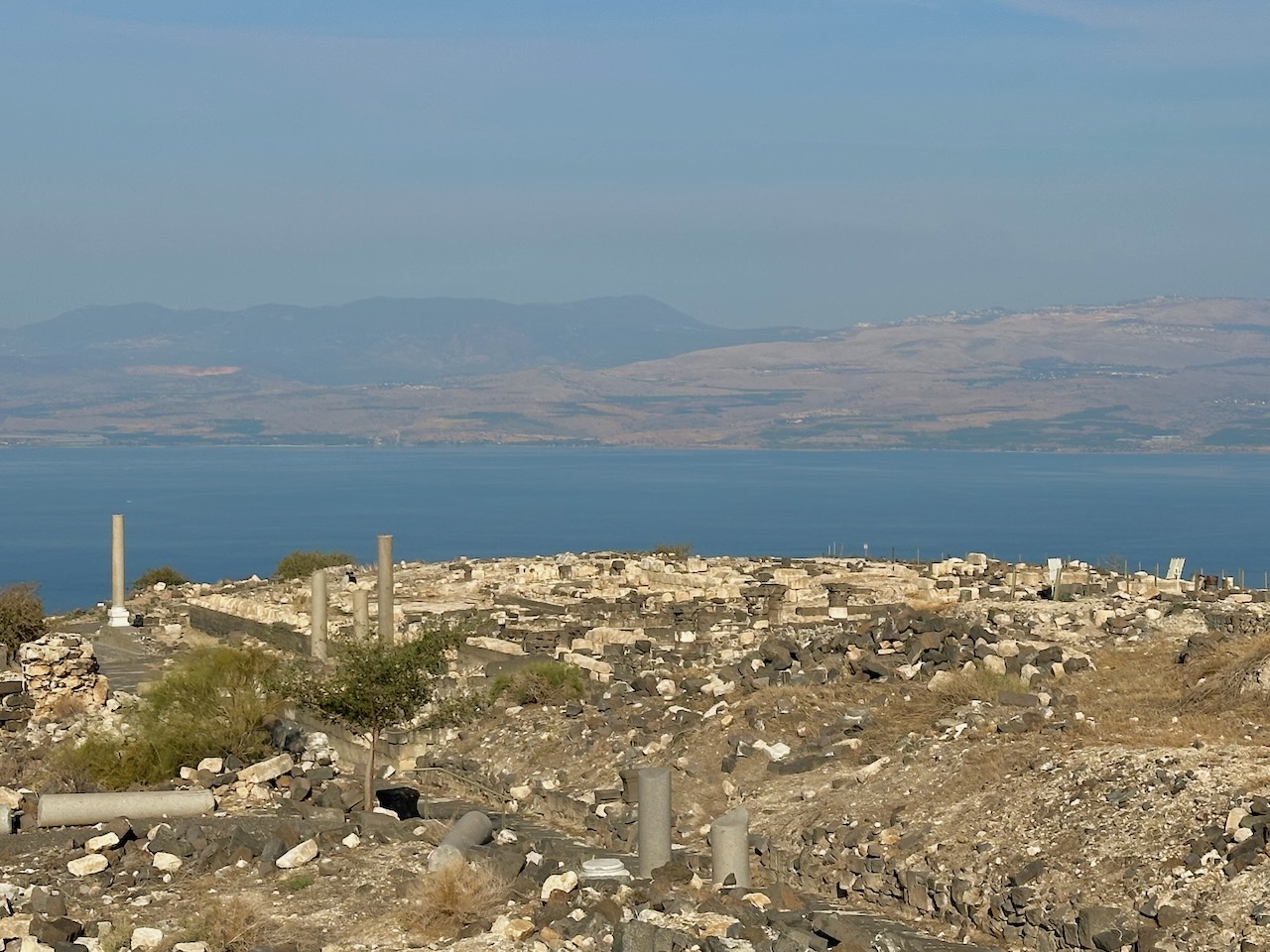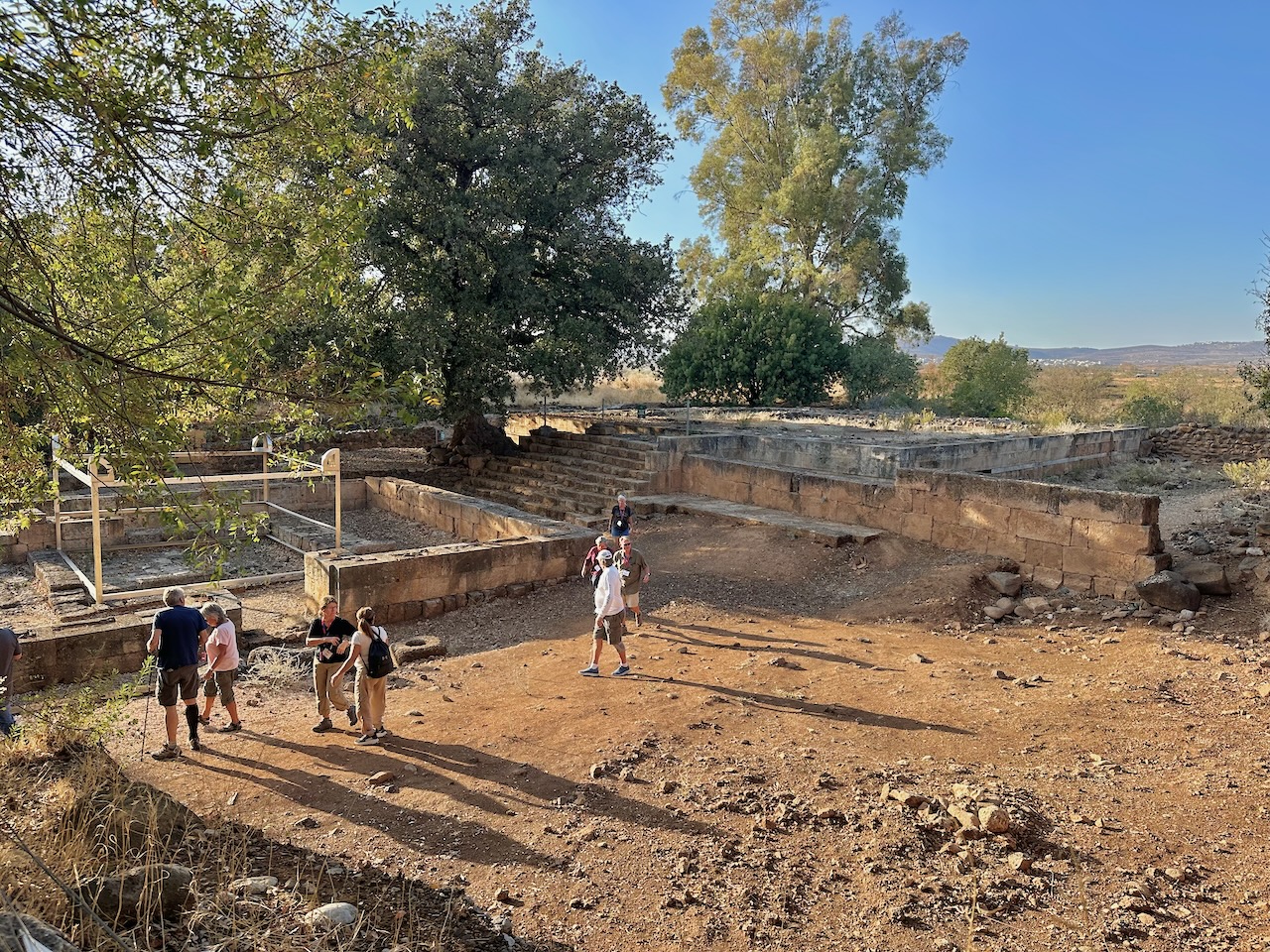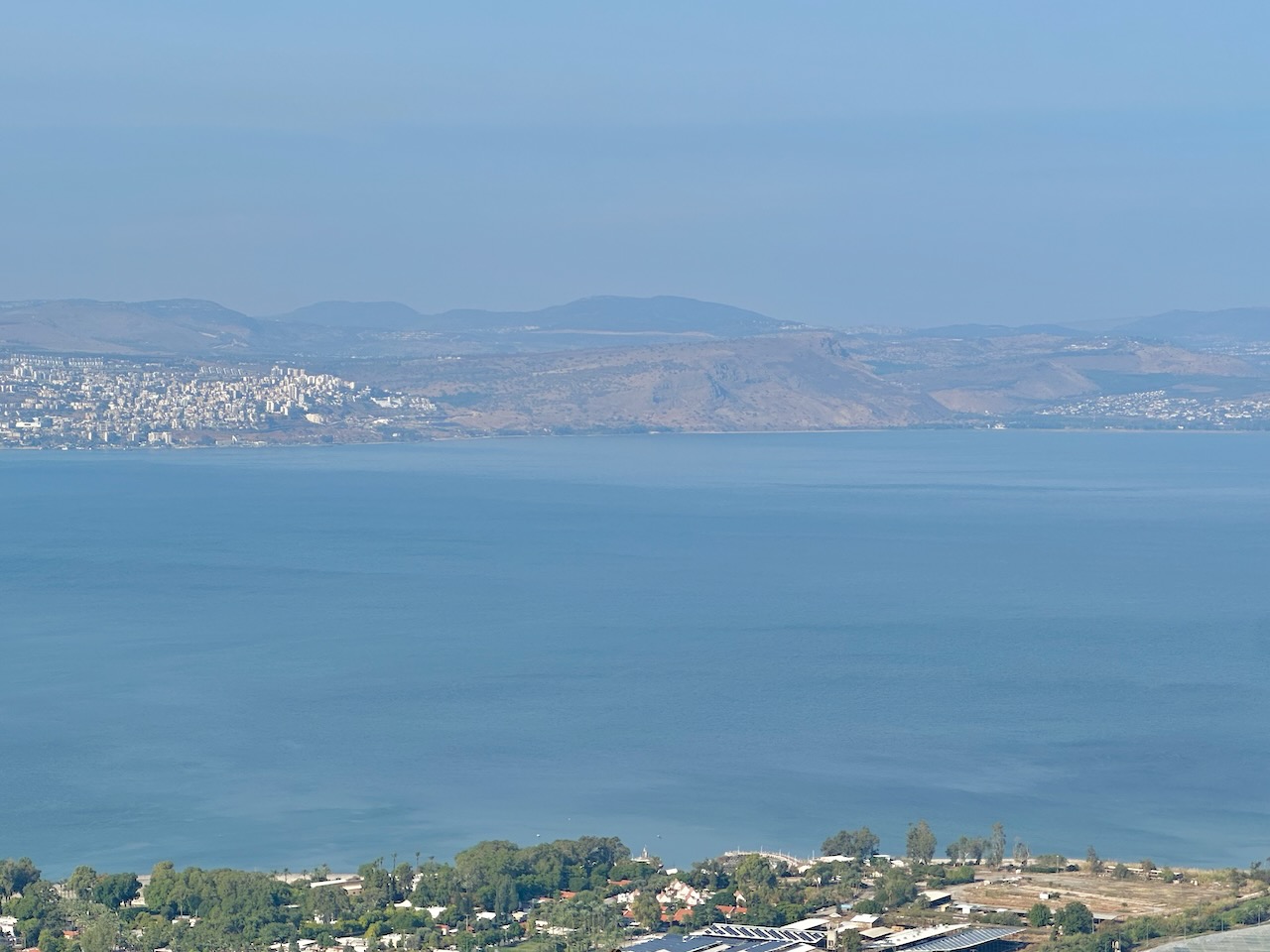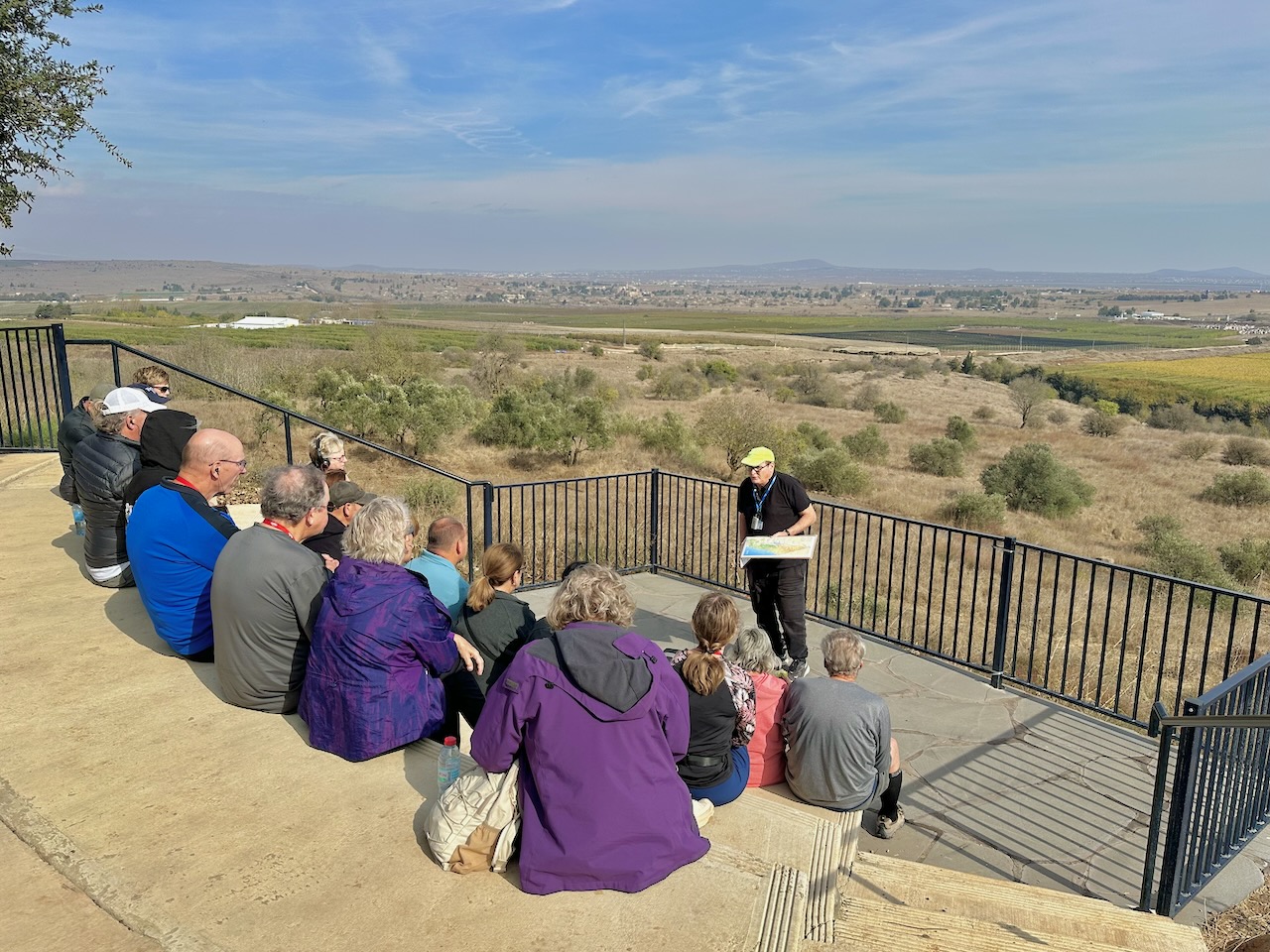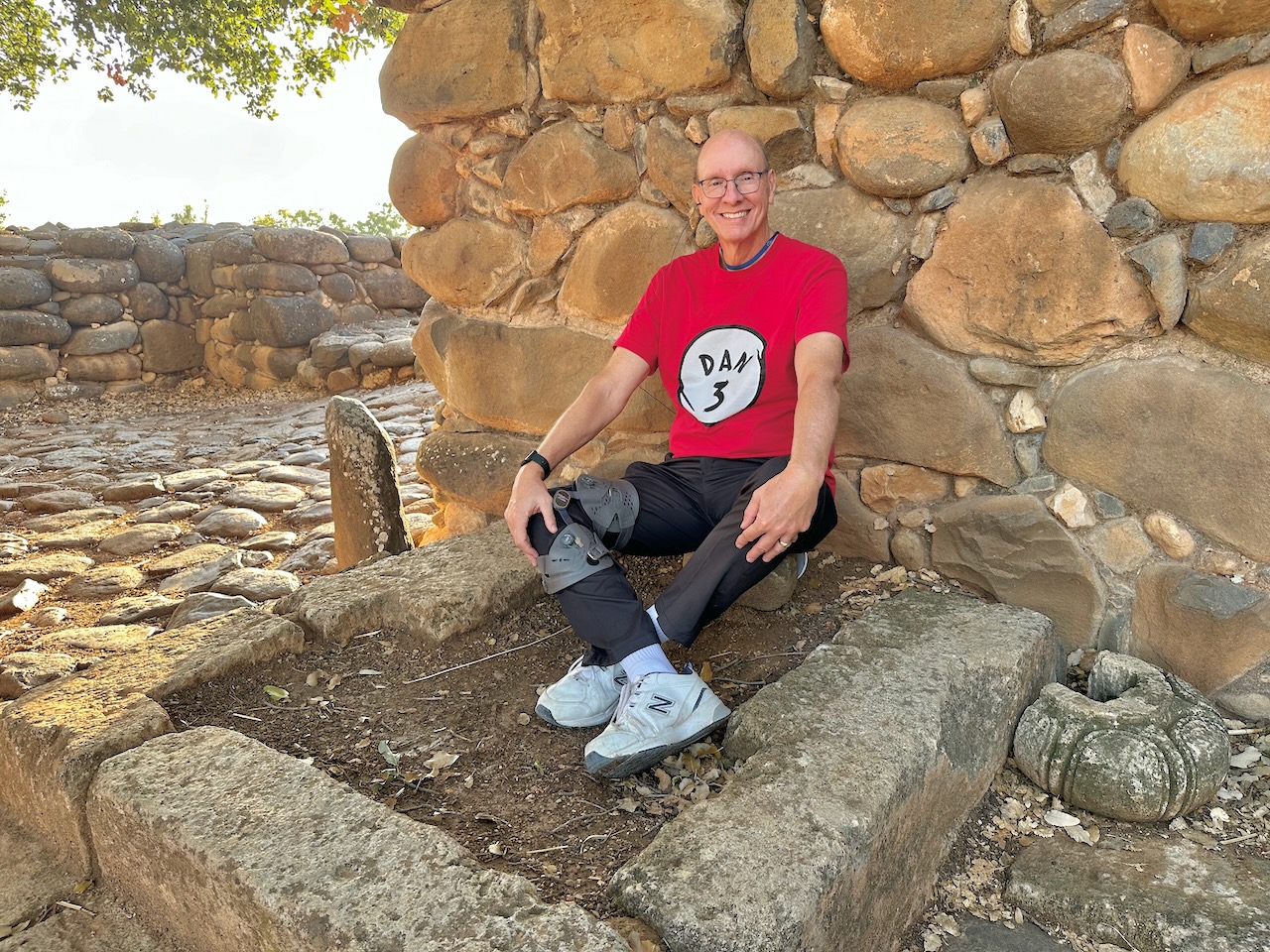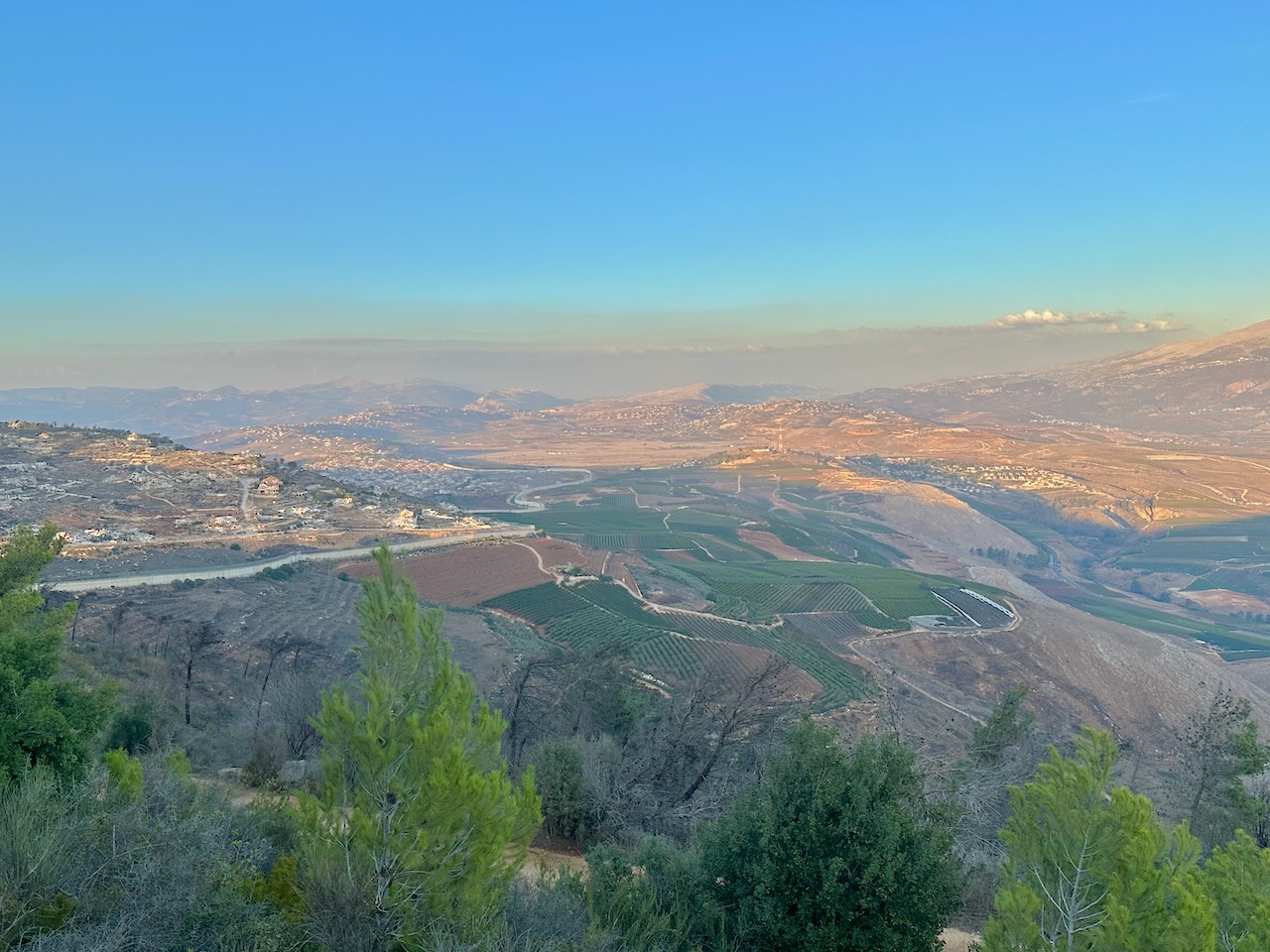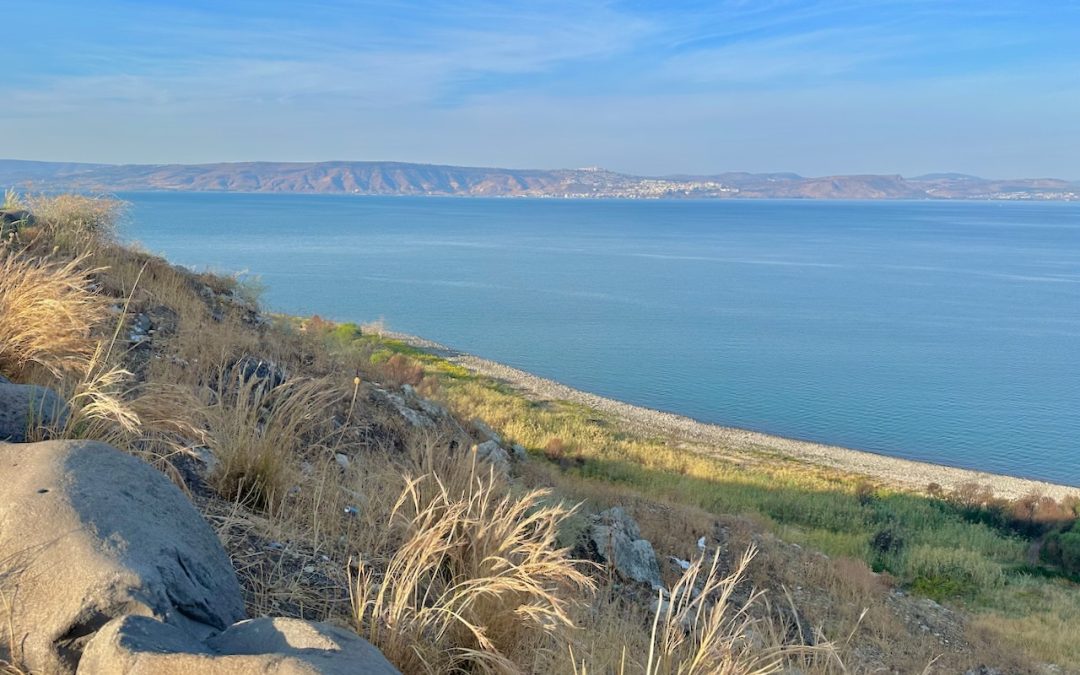Day 11 – Monday, November 17: Hippos, Qatzrin, Syrian Border, Mt. Hermon, Caesarea Philippi, Dan, Misgav Am/Lebanon Border
Today was a Golan Heights day. We visited sites on the northern borders with Syria and Lebanon. The weather was perfectly sunny, with nice temps in the morning (50s), but with warming temps in the afternoon (70s). We really enjoyed being in the Golan Heights for the sites, the views, and the perspectives. We read from Matthew 4 as we left the hotel at 7:15.
Hippos/Sussita
Our first site of the day was Hippos/Sussita. We first drove around the northern end of the Sea of Galilee (near Bethsaida where the Feeding of the 5000 took place, Luke 9) before turning south down the eastern side. On the way we made a brief stop to see the cliffs mentioned in Mark 5.
At Hippos (a Decapolis city), we saw many Roman ruins. During the Byzantine Period (4th-6th centuries AD), there were no less than a half a dozen churches were built here. With a great view of the entire lake (13 miles long), we read the transformational story of the demoniac from Mark 5.
Katzrin
Next, we drove back north to Katzrin, the largest city in the Golan Heights. We visited the Talmudic Village that is here (from about the 3rd-8th centuries AD). We saw good examples of olive presses, the synagogue, and other house structures. We then gathered in a completely-restored stone house where we read from Mark 2. We could see the story unfolding before our eyes!
Syrian Border
Continuing northward, we stopped for a brief stop to look over into Syria. We drove to an area right below Mt. Bental, an old military outpost used in the 1967 war. We enjoyed a nice view into Syria from here (including the city of Kuneitra). As of the last five months or so, Israel now controls more of the buffer area, including the outskirts of Quneitra. They also control the highest peak of Mt. Hermon (9,200 feet).
Caesarea Philippi
Driving through a few Druze cities and past the snow-capped Mt. Hermon, we drove down to the slopes of the Golan Heights to Caesarea Philippi.
This was a pagan city in the days of Jesus that included temples to Augustus, Zeus (Jupiter), and Nemesis. The Pan deity was especially honored here. It was good to see that recent excavations of the Augustus Temple revealed amazing mosaics and other structures. The Banias Spring begins here, one of the three tributaries of the Upper Jordan River. It was in the region of this city that Jesus asked, “Who do you say I am? (Matthew 16). We also recalled the Transfiguration of Jesus (Matthew 17) that took place perhaps on the slopes of Mt. Hermon, or further south (or Nimrod? Arbel?).
“We spent most of the day on the Golan Heights today! Following a visit to Hippos (Sussita), we traveled north to Katzrin, and then to the Syrian Border. In the afternoon we visited Caesarea Philippi and Dan before looking into Lebanon from Misgav Am. Another amazing day!”
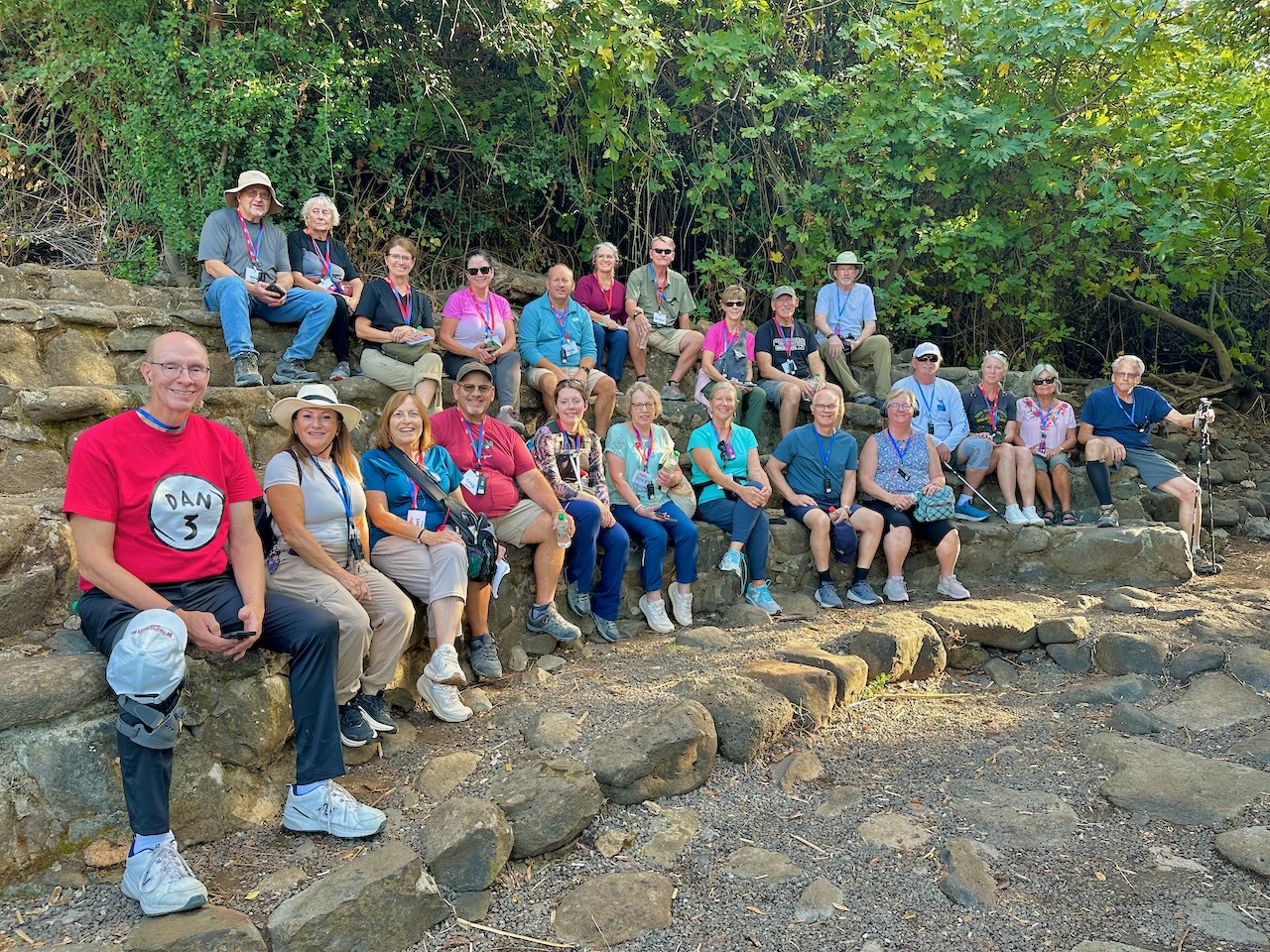
Tel Dan
Our last archaeological site of the day was Tel Dan. We walked through the beautiful nature preserve along the Dan Spring. We stopped by the water to read from Psalm 42. Shlomo also played a ballad on his recorder for us. We continued our walk to the culture center. Here, Jeroboam built an altar and set a golden calf on the high place. Sitting on the steps of the high place, we read from Judges 18 and 1 Kings 12. A pattern of disobedience here led to the end of Dan in 734 BC. We also overlooked the border with Lebanon. Before leaving, we walked past the Canaanite mud brick gate (that was most likely a ceremonial gate built after the time of Abraham). As we left the site we got a quick glimpse of the Israelite gate complex (9th century BC).
Misgav Am/Lebanon Border
Before beginning our drive back to Tiberias, we added an extra stop to Misgav Am, a kibbutz established in 1949. It’s located right the border with Lebanon! First, we considered the story from 2 Samuel 20 that took place at Abel Beit Macaah (a site Dr. John dug at). The site is located near the border on the northern end of the Huleh Valley. We then took a look at today’s border with Lebanon. Shlomo shared both past and present history with Lebanon. The view into Lebanon was incredible, with very clear visibility!
From here we drove south along the Huleh Valley back to our hotel, passing the Canaanite city of Hazor on the way. Once again, we enjoyed a huge dinner and a free evening.
Day 12 – Tuesday, November 18: Arbel Hike/Walk, Boat Ride, Capernaum, Jordan River/Yardenit, Kinneret Cemetery, Magdala, Tiberias
